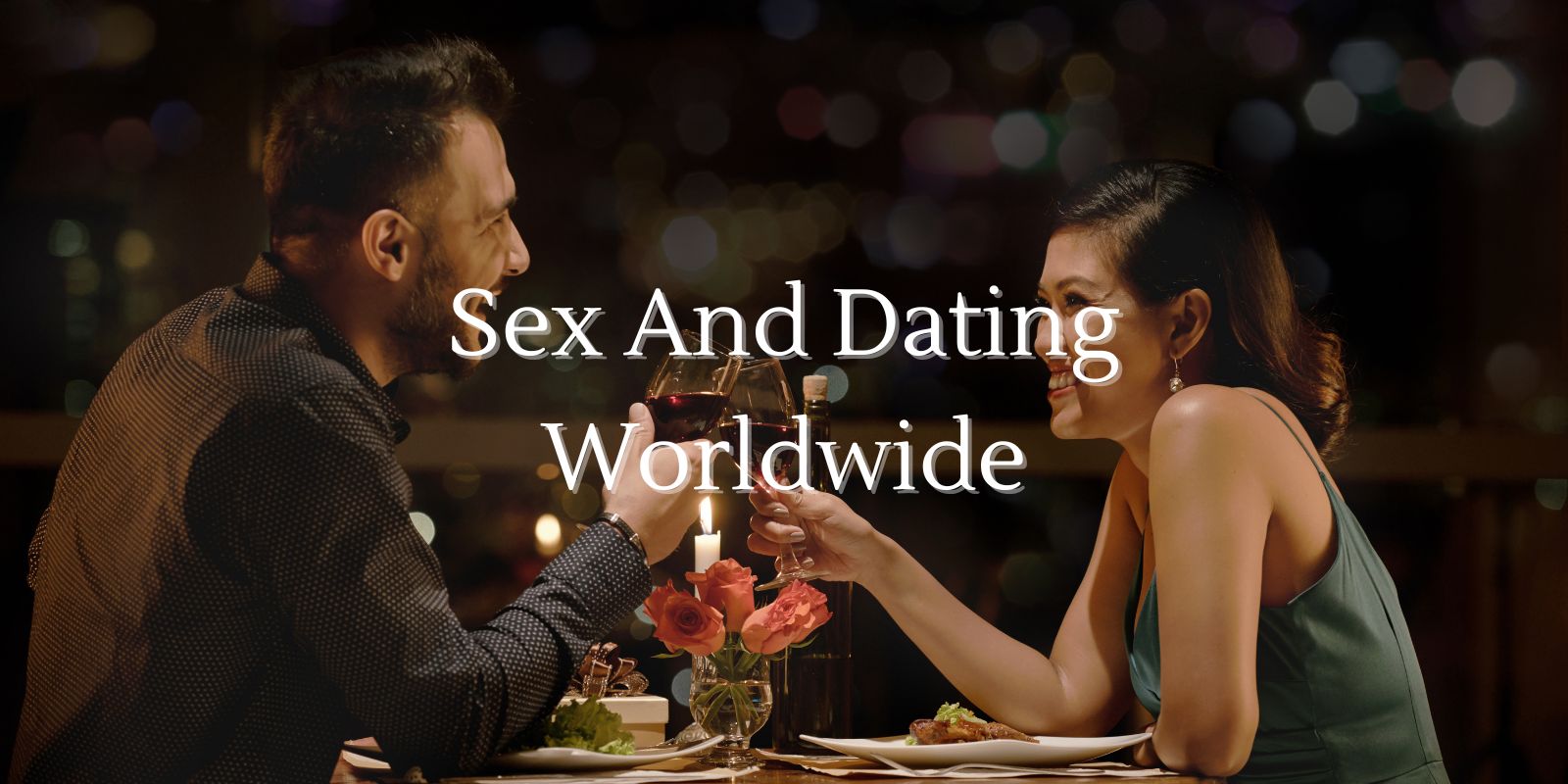What Are The Differences In Sex and Dating Worldwide?
Every culture has its own way of understanding love and attraction. What’s considered romantic or acceptable in one country might feel bold or forbidden in another. Sex and dating worldwide reflect history, religion, and social values that shape how people connect. Understanding these differences helps break stereotypes and encourages more open, respectful relationships.
As someone who’s worked closely with couples and singles from many backgrounds, I’ve seen how varied expectations can be. In some places, relationships begin through family introduction or community approval. In others, they grow through apps and independent choice. These patterns reveal how culture influences emotion and behavior in ways many don’t expect.
Table of Contents – Sex and dating worldwide
- How Culture Shapes Sex and Dating Worldwide
- Traditional vs Modern Dating Norms
- Religion, Modesty, and Sexual Freedom
- Technology and the Global Dating Shift
- Connection Beyond Borders
- Key Takeaways
- FAQ: Global Dating Insights
How Culture Shapes Sex and Dating Worldwide
Across the world, ideas about dating and sexual behavior vary widely. In Western societies, open conversation about desire and consent is becoming more common. Many couples date casually before committing. In contrast, some Asian, Middle Eastern, and African cultures still view dating as a step toward marriage rather than exploration.
These cultural norms affect everything from first dates to public affection. In Japan, couples may avoid kissing in public, while in France, open displays of affection are seen as natural. Each society sets its own rhythm for romance and intimacy. Globalization has blended some of these values, but local expectations still guide how people express attraction.
To see more real-world examples of these cultural contrasts, explore BuzzFeed’s look at how dating differs worldwide. It highlights how factors like gender roles, urbanization, and modern media continue to shape sexual norms across countries today.
Traditional vs Modern Dating Norms
In many regions, the shift from arranged relationships to self-chosen partners shows how quickly social expectations are changing. Traditional dating often placed emphasis on family approval, social status, and long-term commitment. Today, personal choice and emotional connection carry far more weight in much of the world.
Yet, tradition still holds strong in some societies. In India, matchmaking services and family introductions remain common. In contrast, cities like London or New York thrive on dating apps and casual encounters. This mix of old and new reveals how each culture balances respect for heritage with the freedom of modern romance.
Across cultures, communication styles differ too. Some people rely on subtle cues and restraint, while others value open conversation and flirtation. The School of Manners guide offers insight into these etiquette contrasts, from greeting customs to expectations on who pays the bill. What may seem polite in one culture could be misread in another, proving that understanding context is key when dating internationally.
Religion, Modesty, and Sexual Freedom
Religion continues to shape how people view dating, intimacy, and sexual behavior. In conservative cultures, physical affection before marriage may still be seen as taboo, while in more liberal societies, open relationships and premarital sex are widely accepted. These moral frameworks influence how people approach love, attraction, and even casual encounters.
Faith-based expectations also affect modesty and personal boundaries. Many individuals feel pressure to follow cultural rules that limit expression, while others quietly redefine what intimacy means to them. The article Still a Virgin discusses how personal values and faith can coexist with sexual curiosity. It highlights that remaining true to one’s beliefs doesn’t mean avoiding desire—it means exploring it with intention and consent.
Across all backgrounds, one shared value stands out: respect. Whether guided by scripture or self-awareness, consent and care remain the foundation of any intimate connection. When religion and modern sexuality are viewed as compatible rather than opposing, people can find balance between belief and self-expression.
Technology and the Global Dating Shift
Technology has erased many borders when it comes to dating. Apps, social media, and online platforms have connected people who might never have met otherwise. What used to depend on geography or community approval now relies on digital chemistry and mutual interest. While this shift allows for freedom, it also introduces new forms of pressure—curated images, quick judgments, and short attention spans.
Online dating culture varies by region. In some countries, users treat apps as casual meeting spaces, while in others, they serve as platforms for serious relationships. Younger generations in Asia and the Middle East, for example, often balance secrecy with curiosity, using apps discreetly to meet potential partners. In contrast, Western users may see dating apps as extensions of their social lives.
- Increased freedom to connect across borders and cultures.
- Rise in short-term dating and cross-cultural relationships.
- New challenges like ghosting, privacy issues, and unrealistic expectations.
- Opportunities for long-distance connection and emotional intimacy.
The story Vacation Fling explores how technology and travel mix to form temporary yet meaningful relationships. These brief connections often show how love and desire have become more global—driven by curiosity, adventure, and shared emotion, even when time is short.
Connection Beyond Borders
Intimacy looks different across cultures, but emotional needs stay the same. Whether it’s a casual romance in Spain or a quiet courtship in Japan, everyone seeks connection, trust, and understanding. What differs is how people express it—some through direct affection, others through subtle acts of care. These cultural contrasts don’t separate us; they remind us that love adapts to the world around it.
During my work as a professional escort, I’ve met clients from dozens of countries. Each carried unique expectations about pleasure and communication. Some valued slow conversation and gentle touch; others wanted energy, humor, and adventure. What I’ve learned is that attraction crosses every border. When people feel respected and seen, culture becomes a bridge, not a barrier.
For couples navigating distance or cultural differences, shared intimacy tools can help maintain closeness. Simple gestures, like exploring a product from The Best Sex Toys for Couples, can turn long-distance connection into something physical and real. Emotional openness, paired with trust, keeps any relationship—local or global—alive and growing.

Key Takeaways – Sex and dating worldwide
- Sex and dating worldwide reflect local culture, religion, and evolving social norms.
- Modern dating merges tradition with technology, creating both freedom and new challenges.
- Communication and respect are vital in every cultural context, regardless of values or expectations.
- Understanding cultural differences helps avoid misinterpretation and builds stronger connections.
- Love and desire are universal—how people express them simply depends on where they are from.
FAQ: Global Dating Insights
Why is dating so different across countries?
Each country’s culture, religion, and gender roles influence how people meet and express interest. These traditions guide behavior and expectations in relationships.
Is online dating changing traditional values?
Yes. Technology has made dating faster and more global, but many still balance digital freedom with family expectations and cultural customs.
How do religion and modesty affect dating?
Faith-based values often shape when, how, and with whom people form relationships. Some cultures prioritize modesty, while others encourage open expression.
What are common mistakes when dating internationally?
Assuming everyone shares your customs or pace is the biggest one. Learn cultural etiquette, communicate clearly, and show genuine respect for differences.
Can long-distance or intercultural relationships work?
Absolutely. They thrive when partners stay honest, curious, and patient. Shared values, emotional openness, and consistent communication make distance easier to manage.
Benjamin Higgins is a male escort and writer sharing real advice on sex, relationships, and intimacy—helping men become better lovers and partners.



Leave a Reply